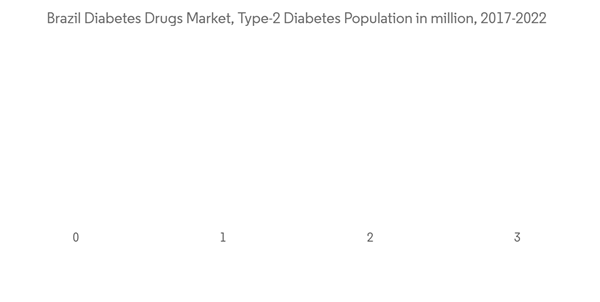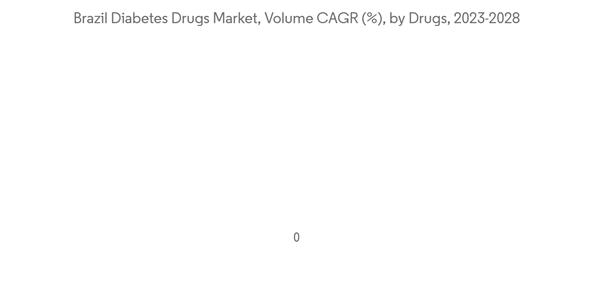Within the first year since its inception, the COVID-19 pandemic has been responsible for premature deaths, particularly among older individuals. Most people who have died of COVID-19 were affected by the co-occurrence of two or more chronic conditions in the same individual. Several studies have confirmed that chronic diseases like diabetes are associated with adverse outcomes in COVID-19 patients. People with diabetes have more chances to get into serious complications rather than normal people. The manufacturers of diabetes drugs have taken care during COVID-19 to deliver the medications to diabetes patients with the help of local governments.
Diabetic drugs are medicines developed to stabilize and control blood glucose levels amongst people with diabetes. Diabetic drugs have been potential candidates for treating diabetic patients affected by SARS-CoV-2 infection during the COVID-19 pandemic. The prevalence of diabetes in people hospitalized with COVID-19 infection and the recognition that improved glycemic control might improve outcomes and reduce the length of stay in patients with COVID-19 have underlined the importance of diabetes care drugs.
According to IDF Diabetes Atlas 2021, 15.7 million adults about 10.5% are currently living with diabetes in Brazil - or one in ten adults. The cost of diabetes-related health expenditure in Brazil is the third highest in the world, at 42.9 billion USD. In addition, 18 million adults around 11.9% have Impaired Glucose Tolerance which places them at high risk of developing type 2 diabetes. 32% of people living with diabetes in Brazil are undiagnosed. Additional data on glycaemic control in Brazil show that only 25% met the therapeutic goal of glycated hemoglobin (HbA1c) less than 7% before the pandemic, as recommended by the Brazilian Diabetes Society (SBD).
When diabetes is undetected or inadequately treated, people with diabetes are at risk of serious and life-threatening complications, such as heart attack, stroke, kidney failure, blindness, and lower-limb amputation. These result in reduced quality of life and higher healthcare costs and lead to a greater need for access to care. Brazil has implemented a set of reforms over the past to improve the distribution of doctors, develop new forms of service organization, introduce new financing models, and implement a range of quality improvement initiatives and policy frameworks to overcome risk factors such as obesity and emerging pandemic threats. This also highlights opportunities for continuing and expanding innovations in the delivery of diabetes care.
Brazil Diabetes Drugs Market Trends
The oral anti-diabetic drugs segment holds the highest market share in the Brazil Diabetes Drugs Market in the current year
The oral anti-diabetic drugs segment holds the highest market share of about 59.1% in the Brazil Diabetes Drugs Market in the current year.Oral Anti-Diabetic Drugs are available internationally and are recommended for use when escalation of treatment for type 2 diabetes is required along with lifestyle management. Oral agents are typically the first medications used in treating type 2 diabetes due to their wide range of efficacy, safety, and mechanisms of action. Anti-diabetic drugs help diabetes patients control their condition and lower the risk of diabetes complications. People with diabetes may need to take anti-diabetic drugs for their whole lives to control their blood glucose levels and avoid hypoglycemia and hyperglycemia. Oral anti-diabetic agents present the advantages of easier management and lower cost. So they became an attractive alternative to insulin with better acceptance, which enhances adherence to the treatment.
Brazil witnessed an alarming increase in the prevalence of diabetes in recent years. Patients with diabetes require many corrections throughout the day to maintain nominal blood glucose levels, such as oral anti-diabetic medication or ingestion of additional carbohydrates by monitoring their blood glucose levels. The rate of newly diagnosed Type 1 and Type 2 diabetes cases is seen to increase. The rapidly increasing incidence and prevalence of diabetic patients and healthcare expenditure are indications of the increasing diabetic drugs usage.
According to IDF 2021, the cost of diabetes-related health expenditure in Brazil is the third highest in the world, at USD 42.9 billion. In addition, 18 million adults, around 11.9%, contain Impaired Glucose Tolerance, which places them at high risk of developing type 2 diabetes. 32% of people living with diabetes in Brazil are undiagnosed. Additional data on glycaemic control in Brazil show that only 25% met the therapeutic goal of glycated hemoglobin (HbA1c), less than 7% before the pandemic, as recommended by the Brazilian Diabetes Society (SBD). The Government partnered with numerous private companies to utilize their supply chain (manufacturing, distribution, and retailers) to ensure low drug prices.
Owing to the factors above, the market will likely continue to grow.
The Dipeptidyl peptidase - 4 (DPP-4) inhibitors Segment holds the highest market share in the Brazil Diabetes Drugs Market in the current year
The Dipeptidyl peptidase - 4 (DPP-4) inhibitors Segment holds the highest market share of about 19.1% in the Brazil Diabetes Drugs Market.Dipeptidyl peptidase 4 (DPP-4) inhibitors are a class of medicine that lower high blood glucose levels and treat type 2 diabetes. Dipeptidyl-peptidase 4 inhibitors include glucose regulatory actions by prolonging the effects of GLP-1 and GIP, ultimately increasing glucose-mediated insulin and suppressing glucagon secretion. Beside the glucose-lowering properties of DPP4 inhibitors, emerging evidence suggests that incretin-based therapies may also positively impact inflammation, cardiovascular and hepatic health, sleep, and the central nervous system.
Over the past decade, two important classes entered this market: dipeptidyl peptidase-4 inhibitors (DPP-4) and sodium-glucose cotransporter-2 inhibitors (SGLT-2). These agents work in various ways to reduce blood sugar levels in people with type 2 diabetes. Some stimulate insulin secretion by the pancreas, and others improve the responsiveness of cells to insulin or prevent glucose production by the liver. Others slow the absorption of glucose after meals. Also, the use of oral anti-diabetes drugs is rising because new-generation oral drugs, such as DPP-4 and SGLT-2, reduce the rate of CV risk in diabetes patients.
In Brazil, the public health system (Sistema Único de Saúde; SUS) is progressively increasing the assistance available for individuals with diabetes. The Ministry of Health established a list of medications and supplies the Brazilian Health System (SUS) provided to patients with diabetes. The various initiatives by the Brazilian government are expected to drive the market's growth.
Brazil Diabetes Drugs Industry Overview
The Brazil Diabetes Drugs Market is moderately consolidated, with major manufacturers, namely Eli Lilly, Sanofi, Novo Nordisk, AstraZeneca, and other generic players, holding a presence in the region. A major share of the market is held by manufacturers concomitant with strategy-based M&A operations and constantly entering the market to generate new revenue streams and boost existing ones.Additional Benefits:
- The market estimate (ME) sheet in Excel format
- 3 months of analyst support
This product will be delivered within 2 business days.
Table of Contents
Companies Mentioned (Partial List)
A selection of companies mentioned in this report includes, but is not limited to:
- Novo Nordisk A/S
- Takeda
- Pfizer
- Eli Lilly
- Janssen Pharmaceuticals
- Astellas
- Boehringer Ingelheim
- Merck And Co.
- AstraZeneca
- Bristol Myers Squibb
- Novartis
- Sanofi Aventis










